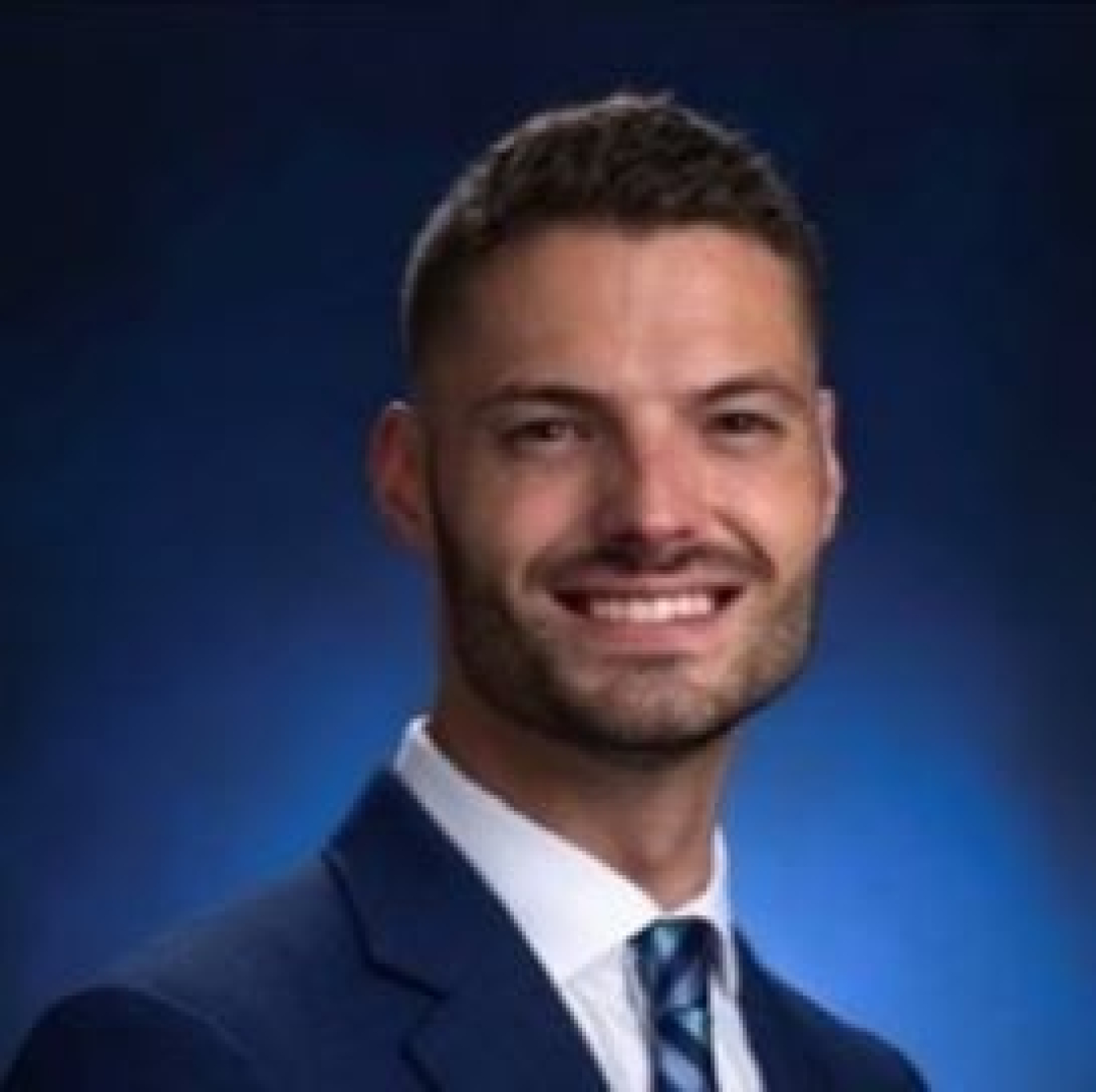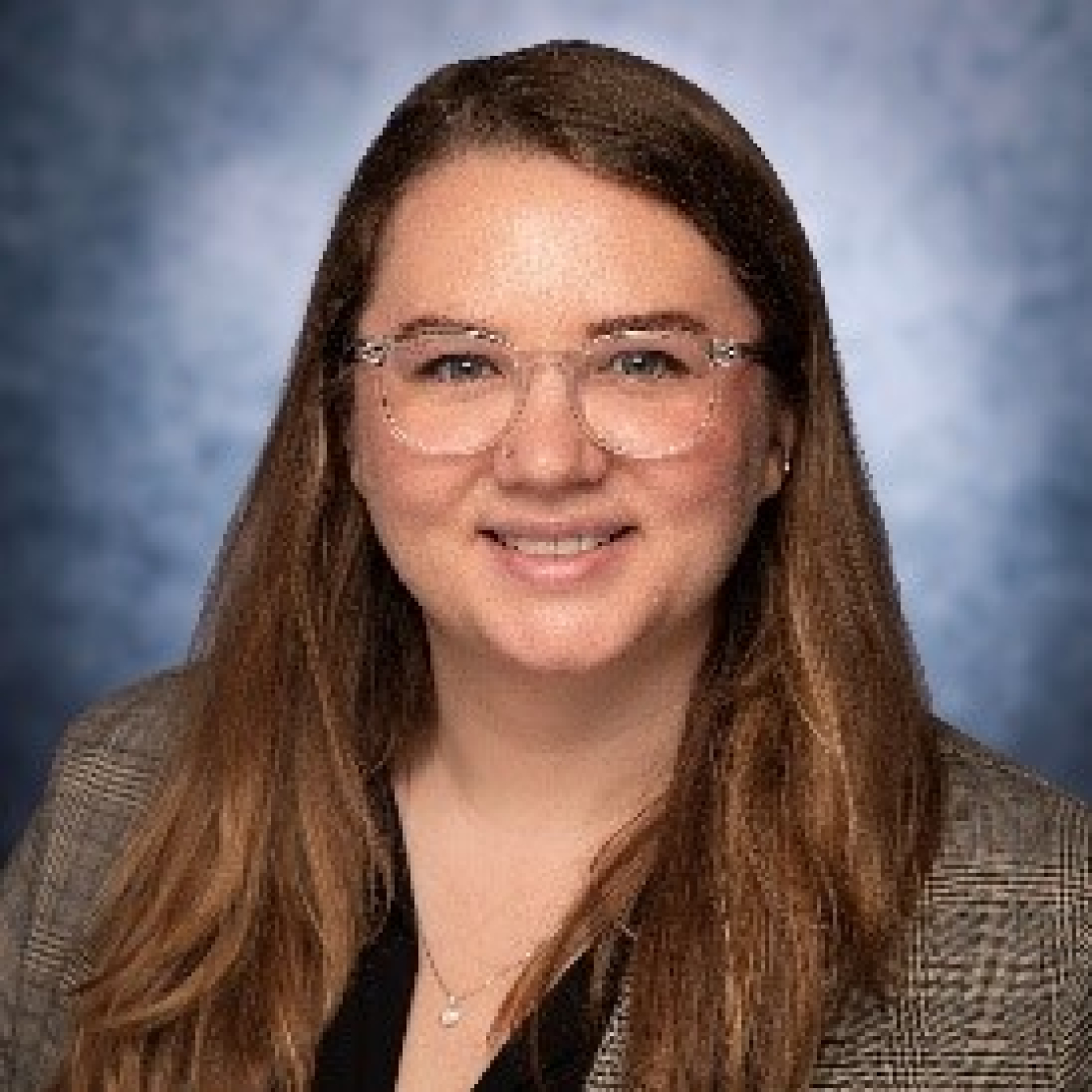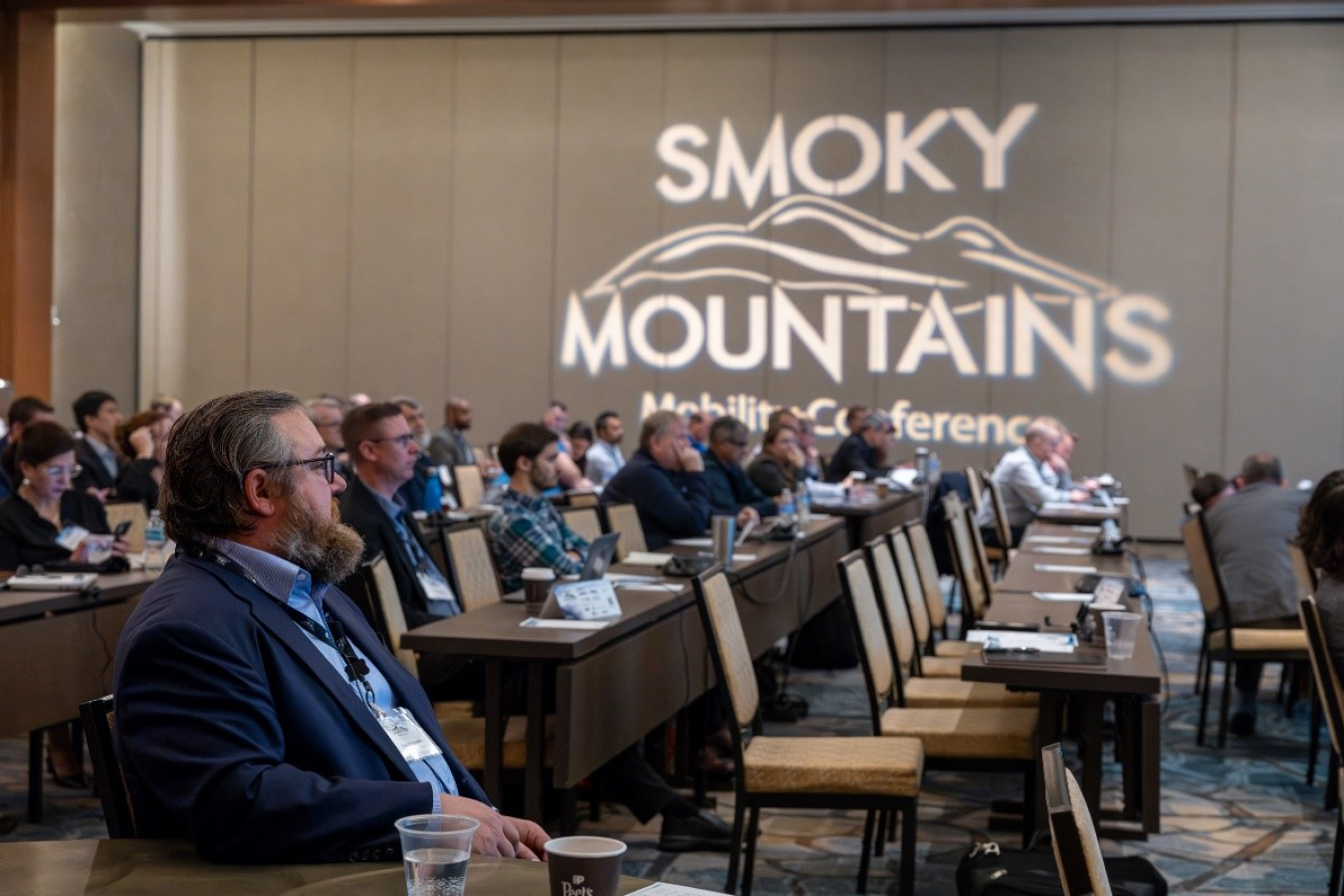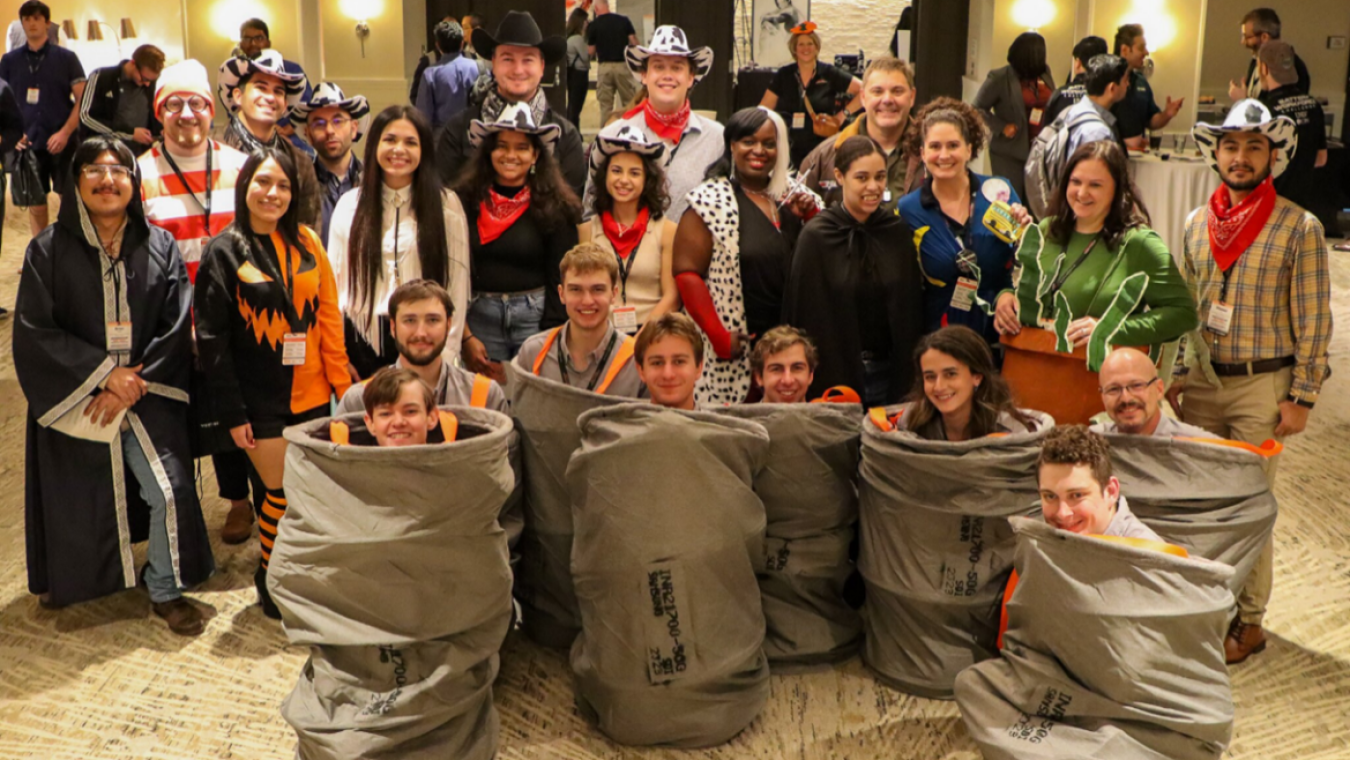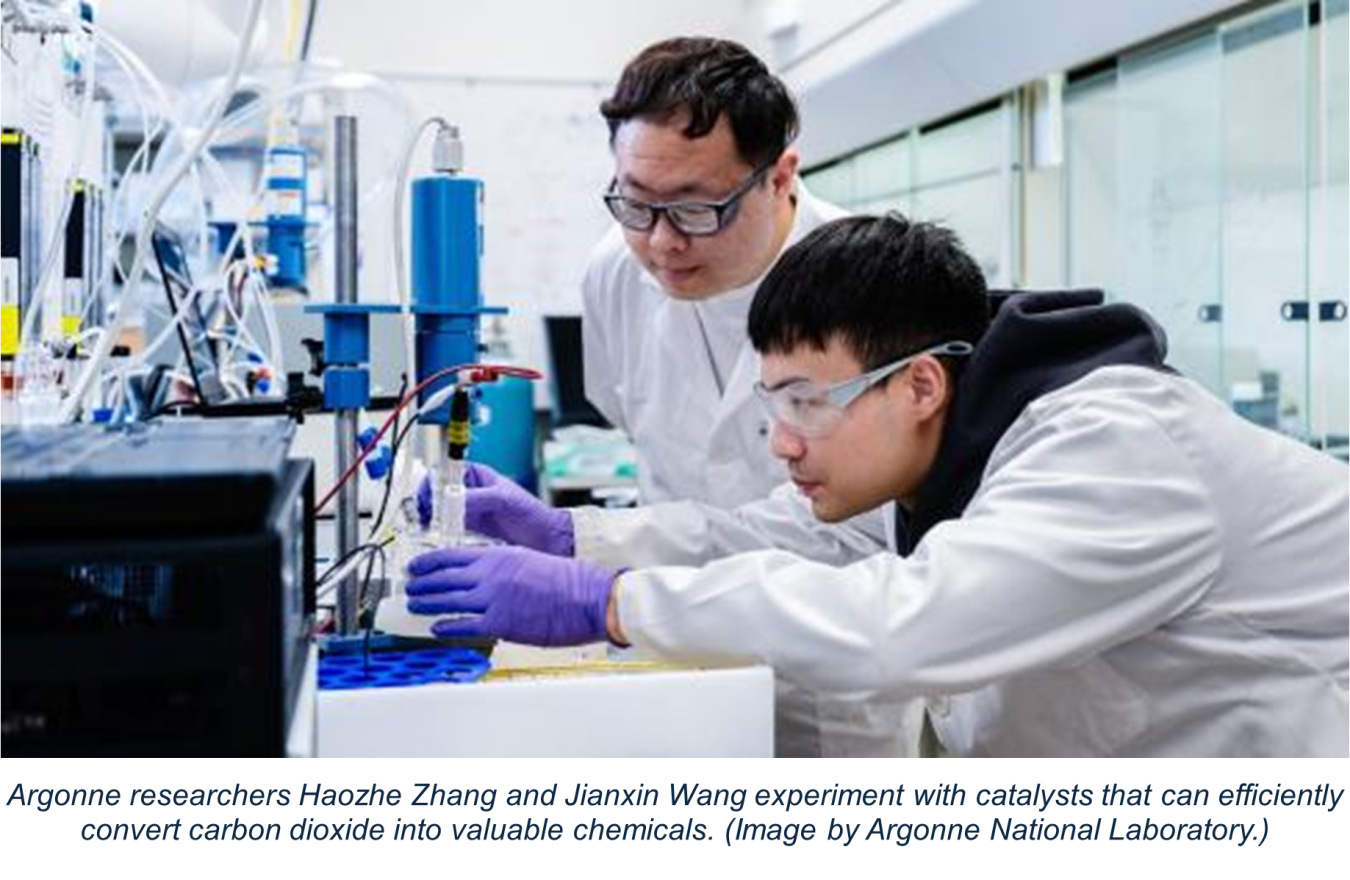Quarter 1, 2025
Get to Know…
How did you get into your area of work?
Laura Roberson: I became interested in the automotive industry due to the innovation and technology development that was changing the future of transportation. I spent time working for a couple different OEMs and more recently for my PhD dissertation researched EV adoption in the US and ways to further engage consumers in these future technologies.
Brian Noyes: As a big advocate for clean and renewable energy technologies, I have wanted to work for the Department of Energy since college. I decided to apply to an opening in the Vehicle Technologies Office (VTO) because I wanted to take my background in engineering, project and program management, and management from the Department of the Navy and apply them in support of the Department of Energy's goals to achieve 100% clean energy by 2035 and a net-zero emissions economy by 2050.
Stephanie Spence: I was interested in inorganic and analytical chemistry in undergrad, which led me into graduate research in lithium-ion batteries. From there, I found VTO as the perfect place to combine my interests in battery research and science communication.
Sarah Pristash: I’ve been interested in the energy transition and climate issues since middle school. I went into my PhD hoping that I could use my technical skills to solve big problems. During my studies, I learned about how scientists could engage with policy and about the AAAS fellowship. I thought it seemed like a great way to make an impact!
How long have you been at VTO/DOE?
Laura Roberson: Only a few months.
Brian Noyes: Just over 8 months
Stephanie Spence: I started as an Oak Ridge Institute for Science and Education (ORISE) Fellow in VTO in February 2023 and transitioned to a Technology Development Manager in November 2024.
Sarah Pristash: I've been with VTO for about three months now! I'm still learning a lot but excited about the work going on here and hope I can make a meaningful contribution.
What is the best thing about your work at VTO?
Laura Roberson: The amount of exposure you can get to the entire transportation technologies landscape—there are so many beneficial and relevant projects going on across programs and the Analysis team gets to support many of these efforts, in addition to broader data and modeling.
Brian Noyes: The best thing about my work with VTO is the ability to drive partnerships across industry, academia, and government organizations to deliver results in support of the Department of Energy's goals to achieve 100% clean energy by 2035 and a net-zero emissions economy by 2050. I can already tell you that the people have been truly incredible to work with and to learn from, and the excitement and collaboration in progressing towards and achieving our collective goals has been nothing short of incredible.
Stephanie Spence: The best thing about my work is learning about a broad range of new technologies and how they can directly impact people's lives.
Sarah Pristash: So far, I’m excited to be learning a lot of new things – my academic research was mainly focused on solar energy materials and had nothing to do with transportation, so it’s been really exciting to start to dive into a new area! I also like doing work that has real-world impact.
What can you share about your involvement with DOE/VTO-related issues over the years?
Laura Roberson: My professional career overlapped with DOE/VTO issues through powertrain strategy and EV product planning roles where understanding and addressing future vehicle technologies were key. I also gained exposure to DOE/VTO-related research through my PhD studies into EVs.
Brian Noyes: I had the great pleasure of attending VTO's Annual Merit Review (AMR) during my very first week on the job and truly enjoyed the opportunity to hear from VTO & EERE leadership, VTO PMs/TMs, and to get a deep dive presentation from many of our PIs on the incredible work that is occurring across the entire VTO portfolio. As the VTO Operations Manager, I coordinate across all VTO's programs, multiple EERE technology offices, and even help document our long-term strategic priorities.
Stephanie Spence: My graduate research was focused on enabling next-generation battery chemistry for eventual EV application. I had the opportunity to attend the VTO Annual Merit Review as a graduate student which was a great introduction to all of VTO's work.
Sarah Pristash: I'm still very new so not much, but before the AAAS fellowship, I dipped my toe (very briefly) into the entrepreneurial space, so I’ve seen some of the grant process from the other side!
What are your hobbies?
Laura Roberson: I enjoy listening to music and attending concerts (The Anthem is a new favorite venue in D.C.), maintaining my houseplant collection and traveling. I am also a D.C. and VA Tech sports fan.
Brian Noyes: My wife and I live on a farm in Darnestown, MD with two huskies (Goose & Maverick), two cats (Bear & Moody), three horses (Fraser, Carl, and Ritz), a flower farm, and a side vegetable garden which takes up a lot of our free time! When we do have some free time to spare, we love trivia, TopGolf, hiking with our huskies, fostering puppies, karaoke, gaming, relaxing at the beach, going to vineyards/wineries/breweries, cruising, playing fantasy football, and exploring new parks & restaurants!
Stephanie Spence: I like to read a lot and usually try to keep up with the latest hit TV shows! I also really like board games, trivia nights, swimming, and going to concerts.
Sarah Pristash: I enjoy watching television and movies, reading, playing video games, baking, and going to concerts.
In the News
2024 EERE Investment Snapshot
The Office of Energy Efficiency and Renewable Energy (EERE) has been driving groundbreaking advances in energy innovation for over four decades. The benefits of EERE’s investments in cleaner, more efficient, and more reliable energy technologies are deep, far reaching, and of vital importance to all Americans.
The 2024 Investment Snapshot is an expansive summary of the scientific, technical, and economic achievements facilitated by EERE funding in recent years. The 60-page document features data, case studies, and success stories from every program in the EERE portfolio. It identifies seven far-reaching benefits of energy innovation:
- Creating jobs
- Accelerating investment and economic growth
- Rebuilding U.S. industry and competitiveness
- Lowering energy costs for households and businesses
- Creating healthier communities
- Protecting our communities from natural and man-made disasters
- Building an independent energy system that is reliable, resilient, and secure
The 2024 Investment Snapshot provides a deep dive of how EERE has made existing technologies and processes cheaper and more effective, including electric vehicle (EV) batteries. The report details how EERE helps bridge the gap to commercialization through partnerships such as the SuperTruck 2 program, which focuses on developing technologies for long-haul trucks to significantly improve their fuel efficiency, and how EERE-funded work has made vehicles more fuel-efficient via lighter materials. Download the EERE Investment Snapshot or visit the website to learn more.
DOE Partners with Federal Agencies and Industry on Action Plans for Energy Innovation Across U.S. Transportation Sectors
DOE announced seven transportation plans to build a more resilient, affordable, and globally competitive transportation system. The action plans—covering key modes of the transportation sector including maritime, rail, trucking, aviation, and off-road—were developed in partnership with the U.S. Department of Transportation (DOT), the U.S. Environmental Protection Agency (EPA), and the U.S. Department of Housing and Urban Development (HUD), along with industry and other stakeholders. Each action plan identifies strategies to accelerate innovation, expand affordable options for consumers, unlock private sector action, and ultimately deliver a better transportation system for all Americans.
The action plans were showcased at the 2025 Transportation Research Board (TRB) Annual Meeting in Washington, D.C., where more than 10,000 policymakers, government and industry leaders, and members of academia convene to discuss all transportation modes. Representatives from DOE's Office of Energy Efficiency and Renewable Energy Sustainable Transportation and Fuels team participated on multiple panels, meetings, and conversations at TRB to discuss the action plans, talk about next steps, frameworks for successful implementation, and how these actions can benefit businesses and consumers.
Read the action plans.
DOE Issues Research Technology and Economic Security Framework for Funding Seekers
On December 3, 2024, EERE announced the release of a memo, issued in November 2024 by the Deputy Secretary for Energy, that describes a framework designed to minimize foreign risks to the scientific enterprise of DOE and the National Nuclear Security Administration (NNSA).
The “Research Technology and Economic Security Framework” memo outlines the approach that DOE’s Office of Research, Technology & Economic Security (RTES) undertakes to protect DOE’s early-stage Research and Development (R&D) in academic settings, applied R&D stage projects, and Demonstration and Deployment stage projects while maintaining an open, collaborative, and world-leading scientific enterprise.
To assist the applicant and recipient community in understanding and adapting to the recently published framework, DOE hosted webinars in December to introduce the approach and answer questions. Funding awardees and prospective applicants were encouraged to review the framework and attend one of two webinars.
In the coming months, DOE intends to publish additional resources that build on this framework. Learn More about RTES and EERE’s Funding Opportunities.
Events
Upcoming Events
The 2025 SAE Government/Industry Meeting is scheduled for January 28-30, 2025, in Washington, D.C. For registration and information visit the SAE website.
Past Events
2024 Smoky Mountains Mobility Conference
The fifth annual Smoky Mountains Mobility Conference was held October 28-31, 2024, in Chattanooga, Tennessee. The conference provided a forum to facilitate discussions on the unprecedented and rapid changes in technology and the barriers to the deployment of a smart, clean, secure and safe mobility future. Austin Brown, Director of VTO, was one of the executive session keynote speakers. He provided a unique perspective on the U.S. National Blueprint for Energy and Emissions Innovation in Transportation and the top priorities for meeting short- and long-term goals.
VTO Funding Opportunities and Selections
Stay up to date on VTO’s funding opportunities at energy.gov/eere/vehicles/funding-opportunities.
Selections:
Fiscal Year 2024 R&D Selections
On December 20, 2024, DOE announced a $51.7 million investment in transportation innovation projects aimed at expanding affordable, reliable mobility options across America. The 19 projects selected for this funding will focus on advancing a broad range of next-generation technologies for the transportation sector. This includes electric vehicle (EV) battery technologies that use domestic, low-cost and abundant materials, improvements in off-road vehicle technologies, advancements in vehicle-to-everything (V2X) connectivity, and innovations bolstering cybersecurity in EV charging systems and infrastructure. Read more about the projects selected.
DOE Announces Nearly $45 Million to Slash Electric Vehicle Battery Recycling Costs
On October 31, 2024, DOE announced $44.8 million in funding from the Bipartisan Infrastructure Law for eight projects that will lower costs of recycling electric drive vehicle batteries and electric drive vehicle battery components, with the long-term aim of lowering vehicle costs. Read more.
DOE Announces $18.6 Million for Projects to Advance Clean Transportation Across America
On October 30, 2024, DOE announced $18.6 million in funding for five projects that will drive innovation in equitable clean transportation and provide first responders with the tools they need to properly respond to calls involving zero emission vehicles. The funding will expand DOE’s Clean Cities and Communities work to make clean transportation options more available, accessible, and affordable nationwide. Read the announcement and learn more about the projects selected.
Clean Cities and Communities Corner

DOE Designates Two New Coalitions
In December, DOE designated two new coalitions in the Clean Cities and Communities partnership: Ozarks Clean Fuels Coalition and Southern Nevada Clean Cities Coalition. Both built stakeholder groups committed to the Clean Cities and Communities mission and presented compelling plans for how they will advance local clean transportation choices. DOE commends the coalitions on their efforts throughout the designation process.
FY 24 Accelerate
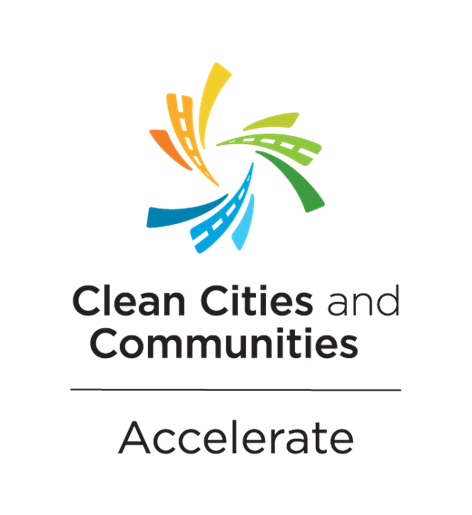 In the 2023-24 school year, DOE provided 65 paid internships through Clean Cities and Communities Accelerate. Intern projects included:
In the 2023-24 school year, DOE provided 65 paid internships through Clean Cities and Communities Accelerate. Intern projects included:
- Creating an alt-fuels educational podcast
- Planning a green jobs fair with over 25 employers
- Organizing stakeholder listening sessions with nearby schools
- Redesigning a Clean Cities and Communities coalition website
- Using GIS to show areas most in need of access to public transportation
- Organizing first-responder training series
- Developing educational graphics for outreach events
Accelerate is a workforce development initiative that unites Clean Cities and Communities coalitions across the country with early-career professionals interested in changing the future of on-road transportation. This initiative, managed by Argonne National Laboratory, aims to advance the adoption of clean transportation technologies, and positively impact the nation’s air quality, energy security, and economic prosperity. Learn more about Clean Cities and Communities Accelerate.
Watch “Local Stories in Advancing Clean Transportation” videos from coalitions in DOE’s Clean Cities and Communities partnership
Middle West Tennessee Clean Fuels Coalition is promoting fuel safety trainings throughout the state to increase safety and resilience in alternative fuel vehicle adoption, in partnership with the National Fire Protection Association. Learn more
Tampa Bay Clean Cities Coalition is working to grow the medium-duty electric vehicle market in Florida by giving drivers a chance to test vehicles at Ride-and-Drive events. Learn more
Beep for Success
Battery Workforce Challenge (BWC) Year Two Recap
Dramatic drum rolls rocked the amphitheater at Stellantis’ Chrysler Technical Center, as each BWC team stepped on stage to shake hands with RAM brand CEO Chris Feuell and Stellantis’ senior vice president Mark Champine before accepting the key fobs to their ’24 RAM ProMaster EVs. This event took place during the Battery Workforce Challenge’s Year Two Fall Workshop held October 29 to November 2 in the metro Detroit area. Teams will put these vehicles to use in the three-year-long collegiate engineering competition, which challenges 12 North American universities and their vocational school partners to design, build, test, and integrate an advanced EV battery pack into each van. The competition is co-sponsored by DOE and Stellantis. Follow along with the BattChallengers’ progress on LinkedIn, Instagram and Facebook.
Electric Fueling is About to Get Easier Than Filling Up with Gas with New Universal Plug & Charge Coming in 2025
Secure communication between cars and chargers is important and makes it possible to simply plug in and charge—and eventually power homes. A new security framework from SAE Industry Technologies Consortia (ITC) called Electric Vehicle Public Key Infrastructure (EVPKI) with input from the Joint Office of Energy and Transportation creates a common, secure platform to let vehicles, chargers, and charging networks communicate clearly, unlocking true interoperability across the entire charging ecosystem for the first time—enabling a much simpler and more automated charging experience.
Learn more and read the full press release.
Access Cutting Edge Data to Advance Clean Transportation with the 2024 Transportation Annual Technology Baseline (ATB)
The 3rd edition of the Transportation ATB is now available with the latest cost and performance data for vehicle and fuel technologies. Federal agencies, state energy offices, city planners, regulators, researchers, and the private sector rely on the trusted, transparent data in the ATB to plan for a sustainable future for transportation. Read more about what’s new this year.
New Resource Outlines Solutions to Accelerate EV Charging Energization
Idaho National Laboratory and Pacific Northwest National Laboratory have published a new report with solutions to accelerate timelines for EV charging load service requests across the country, incorporating expertise from the Joint Office of Energy and Transportation, Office of Electricity, and Vehicle Technologies Office. From automating tools to using power control systems, the approaches proposed in the paper can help accelerate progress on EV charging infrastructure buildout for NEVI, CFI, and other EV charging programs. Strategies range from right-sizing distribution components to employing power control systems and benefits include:
- Increased data access and transparency
- Improved energization processes and timing
- Economic efficiency
- Improved grid reliability and resilience
For more, read the whitepaper.
Argonne Researchers Convert Pollutants into Higher Value Products
Researchers at DOE’s Argonne National Laboratory are working toward a more regenerative future—one where Earth’s resources are circulated sustainably. In this type of economic system, called a circular economy, a product’s end of life is planned for at the design stage. This way, would-be waste becomes a valuable resource for creating new or refurbished products.
Argonne scientists are developing methods to recover and reuse precious metals and other valuable materials from batteries and devices at their end of life. They’re also developing technologies to turn waste into valuable commodities. By collaborating with industry partners, other research institutions and local communities, they’re helping to bridge the gap between laboratory discovery and large-scale societal impact. In addition to the NSF, this research is supported by DOE’s Office of Science’s Office of Basic Energy Sciences and DOE’s Office of Energy Efficiency and Renewable Energy’s Bioenergy Technologies Office, Vehicle Technologies Office, Advanced Materials and Manufacturing Technologies Office, and Industrial Efficiency and Decarbonization Office. Read more.
Office of the National Cyber Director Publishes an Energy Modernization Cybersecurity Implementation Plan to Secure an Ambitious Energy Future
On December 20, 2024, the Office of the National Cyber Director (ONCD) released an Energy Modernization Cybersecurity Implementation Plan (EMCIP). America’s energy landscape is becoming increasingly digitized. New internet-connected technologies enhance the efficiency, performance, safety, and resiliency of the electricity grid. These energy technologies are reducing costs for consumers; elevating the quality and reliability of energy services provided; creating new markets and economic growth opportunities; and improving the environment. But, as highlighted in the Nation’s first Report on the Cybersecurity Posture of the United States, adversaries are continuing to target critical infrastructure. Many of these connected and digitized energy technologies can augment system integrity as compared to legacy systems; at the same time, their introduction can increase the attack surface that adversaries could target. Today, clear opportunities exist to secure American energy infrastructure, at scale, against potential cybersecurity threats.
Linchpin Technologies
Earlier this year the U.S. government identified five linchpin energy technologies for which cybersecurity and resilience improvements could have the highest return on investment and improve the security of the system. The EMCIP includes many initiatives specific to those technologies, including Electric Vehicles (EVs) & Electric Vehicle Supply Equipment (EVSE).
Read more about the Energy Modernization Cybersecurity Implementation Plan
Publications
2025 Fuel Economy Guide Now Available
The U.S. Department of Energy (DOE) and the U.S. Environmental Protection Agency (EPA) have just released the 2025 Fuel Economy Guide. The Guide provides detailed fuel economy estimates for model year 2025 light-duty vehicles, along with estimated annual fuel costs and other information for prospective car buyers.
2024 VTO Annual Merit Review Results Report Now Available
DOE has published the 2024 Vehicle Technologies Office (VTO) Annual Merit Review (AMR) Results Report. The 2024 VTO AMR was held June 3-6, 2024 and encompassed work done by VTO: 226 individual activities were reviewed by 218 reviewers. The objective of the meeting was to review the accomplishments and plans for VTO over the previous 12 months, and provide an opportunity for industry, government, and academia to give inputs to DOE with a structured and formal methodology. The meeting also provided attendees with a forum for interaction and technology information transfer. Read the 2024 VTO AMR Results Report, and learn more about VTO’s 2025 AMR, which will be held June 2-5, 2025 in Arlington, Virginia.



